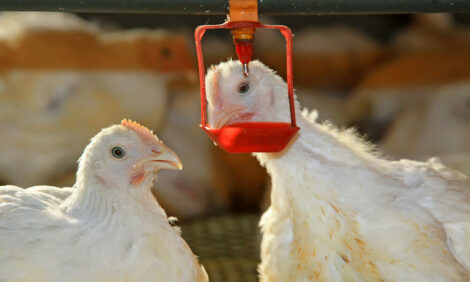



Consumers Say Animal Welfare Labelling Important
US - A study shows mandatory labelling of animal welfare practices is important to more than 60 per cent of consumers.Grocery shoppers are increasingly interested in where their food comes from, and in the case of meat and eggs, they are also interested in how the live animal was treated. In fact, consumers may be so interested that they are willing to pay extra for meat and eggs with a mandatory label indicating animal welfare information, according to a university study.
Kansas State University assistant professor, Glynn Tonsor, who along with Michigan State University professor, Christopher Wolf, conducted the study, said: "The analysis suggests there may be significant support by consumers for mandatory labeling of production practices impacting animal welfare."
The agricultural economists examined US resident support for mandatory labelling of animal welfare information on pork and egg products. Data was collected in 2008 from 2,001 US residents.
The use of gestation crates and stalls for swine, as well as laying hen cages for chickens has been heavily criticised by some groups for being too restrictive for the animals, said Dr Tonsor, who is a livestock marketing specialist with K-State Research and Extension. In some states, those concerns have resulted in citizen petitions and legislative bills that establish space and/or movement requirements for sows and/or hens that lay eggs.
A fact sheet summarising the study, a link to a full scientific article, and corresponding videos are available online [click here].
When initially asked, 61.7 per cent of survey respondents indicated they favoured mandatory labelling of pork produced on farms using gestation crates/stalls, and 62.0 per cent said they were in favour of such labelling of eggs produced using laying hen cages.
The typical US resident was estimated to be willing to pay 20 per cent higher prices for pork and egg products in exchange for mandatory labeling information conveying the use – or lack thereof – of gestation crates/stalls or laying hen cages. The economists believe, however, that the 20 per cent estimate may overstate actual demand and note more work is needed. Demand was higher among females and younger consumers than in others involved in the study. The perceived accuracy of information from different sources was also an important demand driver.
The issue of mandatory labelling policies regarding animal welfare information has not been studied extensively, and the authors assert further research is needed prior to any policy discussions.
Among the most pressing issues is the need for a benefit-cost assessment, Dr Tonsor said.
He explained: "This study raises more questions than it answers, which is a consistent with the current state of knowledge regarding animal welfare concerns and associated changes in the livestock industry. Much research remains that would further improve our understanding of underlying demand for farm animal well-being, the implications for livestock producers, and the ultimate appropriateness of alternative regulatory activity in setting standards for the treatment of farm animals and the provision of such information to the general public."









